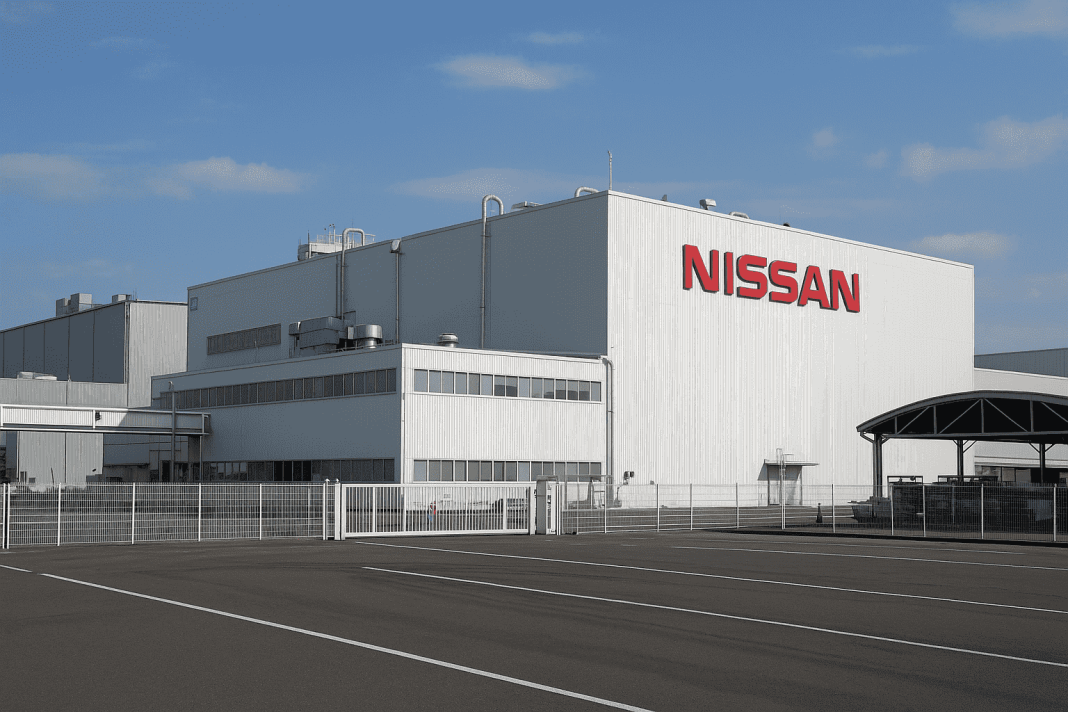Nissan Motor Co. has announced the c, a strategic move that marks a significant shift in its global operations. Located in Kanagawa Prefecture, this plant has been a cornerstone of the company’s manufacturing network for over six decades. The Oppama plant closure is part of a wider effort to cut costs and streamline operations as the company pivots toward electric vehicle (EV) innovation and long-term sustainability.
Why Nissan Is Closing Its Long-Standing Plant
The decision stems from Nissan’s urgent need to recover from recent financial losses, including a reported $4.5 billion deficit in the previous fiscal year. As part of its “Re:Nissan” recovery plan, the automaker aims to reduce its production capacity from 3.5 million to 2.5 million vehicles annually.
This cutback will include the closure of the Oppama plant by March 2028 and the shift of production to the Kyushu factory. Consolidating operations will allow the company to benefit from improved efficiency, centralized logistics, and lower operational costs.
Learn more about Nissan’s recovery plan on its official website.
A Legacy of Innovation and Milestones
Since opening in 1961, the Oppama facility has manufactured more than 17.9 million vehicles, including Nissan’s most iconic models. The Nissan Leaf, the world’s first mass-produced electric vehicle, rolled off its lines in 2010, setting the stage for EV development globally.
While the production phase ends, Nissan will continue to use parts of the site for research, development, and crash testing. This ensures that the facility maintains a role in Nissan’s ongoing innovation journey.
Worker and Community Impact
Approximately 2,400 employees work at the Oppama plant. Nissan has committed to working closely with labor unions to support these employees through reassignment, early retirement, or relocation opportunities primarily to the Kyushu plant.
Yokosuka, the city where the plant is based, has relied heavily on the economic output of the factory. Small businesses and local services may face challenges as Nissan phases out plant operations. The company has signaled it will explore new uses for the site, which could include partnerships with technology or logistics firms.
For more information on Nissan’s worker initiatives, visit Nissan Sustainability.
Nissan’s Streamlining Beyond the Oppama Closure
Apart from the Oppama plant closure, Nissan plans to shut down its Shonan facility by March 2027. These closures are accompanied by a simplification of vehicle platforms—from 13 down to 7—and a 70% reduction in component complexity. These moves aim to cut costs, reduce inefficiencies, and prepare for the next wave of vehicle electrification.
This isn’t just about cutting expenses. It’s a transformative approach to reposition Nissan as a lean, competitive brand in a rapidly shifting market.
Industry-Wide Impact of Nissan’s Strategy
Nissan’s move mirrors global trends in the automotive world. With demand shifting toward electric and hybrid vehicles, automakers are rethinking their infrastructure. Renault’s closure of its Flins plant in France and Ford’s restructuring in Europe are parallel examples.
This global reconfiguration reflects a broader push toward consolidation, automation, and environmental sustainability. Nissan’s action may also prompt other Japanese automakers like Toyota and Honda to evaluate similar strategies.
Shifting Focus to Electrification and the Future
Post-closure, Nissan’s Kyushu plant will become the company’s main production hub. The newer, better-equipped facility is more capable of handling the assembly of EVs and hybrid models.
The transition aligns with Nissan’s Ambition 2030 plan, which targets more than 50% electrified global sales by the end of the decade. The Oppama closure supports that goal by reallocating resources and upgrading facilities.
Broader Implications of the Transition
While closures like this one can be seen as setbacks, they often represent steps forward in adapting to future needs. Nissan’s leadership has framed this as a “necessary but difficult” decision. By reducing overhead and modernizing its operations, the company is taking essential steps toward profitability and environmental responsibility.
Still, transparent communication with employees and affected communities will be key to easing the transition and maintaining public trust.
Conclusion: What the Oppama Plant Closure Signifies
The Oppama plant closure is more than just the end of an era; it’s a signal that Nissan is willing to evolve with the times. As global auto manufacturers respond to environmental mandates and economic pressures, strategic moves like these may determine long-term success.
Although the decision affects thousands of workers and an entire community, it also opens the door to new beginnings, cleaner technologies, and leaner operations.
Stay informed on the auto industry’s evolution through our BYD vs Tesla EV Sales 2025: Who Is Winning the Race?.



